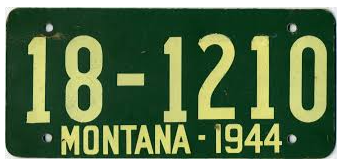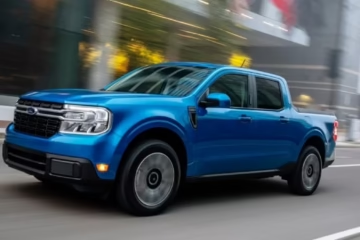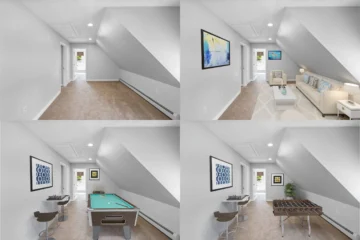Thinking about titling or registering a vehicle in Big Sky Country? Whether you’re a new resident, moving a classic in from another state, or just curious how Montana does things differently, this guide walks you through the real steps, the paperwork, the fees, and smart tips all focused on Montana Title and Registration.
Ready to skip the paperwork headache? With 1 Dollar Montana, you can start your Montana vehicle Registration quickly and confidently. We’ll guide you through notarization, lender/title requests, fee estimates, and county rules so you file right the first time.
Quick overview: Montana Title and Registration
A title is the legal document proving ownership of a vehicle. Registration ties that vehicle to the state for legal use on roadways (license plates, annual/periodic fees, etc.). In Montana, the process is tightly linked: you generally cannot obtain a title without also registering the vehicle; titling and registering are handled together.
Why this matters: When you buy, sell, move in, or pay off a loan, you’ll be signing documents and paying fees that update both the title record and the registration record at the same time.
Who must get a Montana title and registration: residents, new residents, and others
If you live in Montana or establish residency, you’re expected to apply for a Montana vehicle title and registration. New residents must complete this step within a limited window after establishing residency — Montana requires new residents to title and register vehicles within 60 days of establishing residency. If you miss that window, you may face fines or complications when insuring or selling the vehicle.
Non-residents who place a vehicle in Montana long-term (or set up certain business entities such as an LLC in Montana) may also interact with the title and registration system — but that raises legal and tax questions (see the “risks & rules” section below).
Documents you’ll need — the real checklist
When you go to the county treasurer’s office, MVD Express, or other authorized agent to complete Montana Title and Registration, bring the following (typical list — specific cases vary):
- The original vehicle title (or the out-of-state title). If a lienholder holds the title, you may need an MV63 Request for Foreign Title Transfer or lender cooperation.
- A completed Montana title application (available from the MVD/forms pages or county treasurer).
- A notarized bill of sale when applicable (private-party purchases). Montana often requires the seller’s signature to be notarized on the title.
- A current registration or registration receipt if transferring from another Montana registration.
- Proof of identity and residency (driver’s license, utility bill, lease, etc.).
- Odometer disclosure if the vehicle is within the federal odometer disclosure years.
- Payment for title and registration fees (fees described in the next section).
County treasurer offices sometimes have local nuances — check your county’s motor vehicle page or call ahead. If your title is held by a lender, the MVD has a process to request the out-of-state title from the lender so the Montana title can be issued.
Fees, permanent registration, and how Montana calculates cost
Montana does not use a single flat fee; registration fees depend on vehicle type, age, weight, value, and sometimes county. For light passenger vehicles, there’s a tiered structure that makes newer cars cost more than older ones; older vehicles may be eligible for permanent registration (a one-time registration option for qualifying vehicles). Typical light vehicle registration fee tiers and examples are published by Montana’s MVD.
A few practical points about fees:
- Newer, higher-value vehicles cost more to register than older vehicles.
- Permanent registration (available under qualifying conditions, often for older vehicles) converts an annual renewal into a one-time registration; counties and the state outline eligibility procedures and fee estimates.
- Commercial and heavy vehicles have separate fee schedules based on gross vehicle weight and other variables (different forms and filings).
Because counties can add small amounts of administrative fees, it’s smart to use an official fee calculator or call the county treasurer’s office for an estimate before you go.
Sales tax, the LLC route, and legal cautions
One reason Montana’s system attracts attention is that Montana does not impose a statewide sales tax, which has led some people to look closely at titling and registration options (including using Montana LLCs) to reduce vehicle sales taxes in higher-tax states. While Montana’s lack of sales tax is a factual advantage, relying on out-of-state registration strategies can be legally risky and have consequences in your home state. Professional legal or tax advice is strongly recommended if you’re thinking of pursuing an LLC-based registration route.
Recent reporting and enforcement activity have highlighted that other states are moving to crack down on setups that are designed primarily to avoid taxes. Registering a vehicle where you don’t live can trigger audits, fines, or forced re-registration in the state where the vehicle is primarily garaged. Always weigh the upfront savings against potential long-term liabilities.
Transferring titles: private sale, dealer sale, and out-of-state vehicles
Private sale: seller signs and notarizes the title as required; buyer takes the notarized title and bill of sale to the county treasurer or MVD Express to complete the transfer. Notarization of seller signatures is a frequent Montana requirement.
Dealer sale: dealers usually handle title and registration paperwork, but confirm what fees you will owe at signing and what the dealer will file on your behalf.
Out-of-state vehicles: if the vehicle has an out-of-state title, Montana’s process typically requires either the physical title or a formal request from your lender (if the lender holds the title). Counties use a formal Request for Foreign Title Transfer (MV63) or similar forms to bring the out-of-state title into Montana’s system. If you’ve recently moved to Montana, expect to follow these steps and bring proof of residency.
Special situations: salvage, rebuilt, historic, and donated vehicles
Montana has title branding rules for salvage and rebuilt titles — if a car was declared a total loss or repaired after significant damage, that will be reflected on the title (branded). The Montana Title Manual and the Department of Justice provide guidance on salvage titles and the inspection steps sometimes required before a rebuilt vehicle is issued a clean title.
Historic or classic vehicles often have special registration pathways that can reduce fees or change eligibility for permanent registration. If your vehicle is a collector’s item, check with the county treasurer and MVD manuals for the correct classification and benefits.
How to save time: using MVD Express, county services, or third-party help
Montana uses county treasurer offices and authorized agents (like MVD Express) to handle many title and registration transactions. Some counties have moved particular title work to centralized or contracted services, so it’s common to use an MVD Express location for faster processing. Check your county’s motor vehicle division page for local instructions and whether walk-ins or appointments are required.
If paperwork is confusing or you want someone else to file things for you (especially for out-of-state titles or lender-held titles), many businesses offer filing services — but verify their reputation and make sure they use official MVD forms.
Insurance, plates, and driving while waiting for the title
You must have appropriate insurance for any vehicle you drive. Some insurers require the vehicle to be titled and registered in the policyholder’s primary state; others accept proof of application for registration while processing is underway. Keep proof of insurance with you and confirm your insurer’s rules when you change title/registration.
If your registration application is being processed and you were issued temporary plates or receipts, carry them and follow any instructions from the county treasurer or MVD Express.
Common pitfalls and how to avoid them
- Missing notarization — Montana often requires seller signatures to be notarized. Bring a notarized title or use a notary at the time of sale to avoid delays.
- Lender-held titles — if the lender holds the title, start the MV63 or lender request early; it can take time to have the title sent to Montana.
- Underestimating fees — use the official fee pages and your county treasurer to estimate total costs, including possible county or administrative fees.
- Trying to dodge taxes — creative schemes to avoid sales taxes (registering out-of-state when you really live elsewhere) attract attention and enforcement action. Weigh legal risks carefully and consult a professional.
Step-by-step: walk-in checklist for completing Montana Title and Registration
- Gather documents: original title or lender instructions (MV63), ID, proof of residency, bill of sale (if private sale), odometer disclosure (if needed).
- Complete title/registration application forms (available from MVD/forms or county treasurer pages).
- Visit the county treasurer’s office or an authorized agent (MVD Express). Ask whether you should have an appointment.
- Pay all fees and taxes (if applicable — note Montana’s sales tax stance) and receive plates/registration.
- If the title is held by a lender, confirm the timeline for receiving the title and ask about temporary documents you can carry in the meantime.
Final tips: do this before you buy, move, or sell
- Before you buy from a private seller, inspect the title for lien notations and ensure signatures are notarized.
- If you’re moving to Montana, start the title/registration process early — you have about 60 days from establishing residency.
- If you plan to use an LLC or register a vehicle for cross-state reasons, speak with a tax attorney — the short-term savings can lead to long-term liability.
Conclusion
Montana Title and Registration blends straightforward state administration with a few special rules (notarization, lender/title handling, tiered fees, and permanent registration options). Getting it right means bringing the right documents, understanding the fee structure, and being aware of the legal boundaries if you’re not a Montana resident.
1 Dollar Montana can help you take the worry out of your Montana Title and Registration. They handle notarization checks, lender title requests, county fee estimates, and the full filing process, so you don’t have to.



